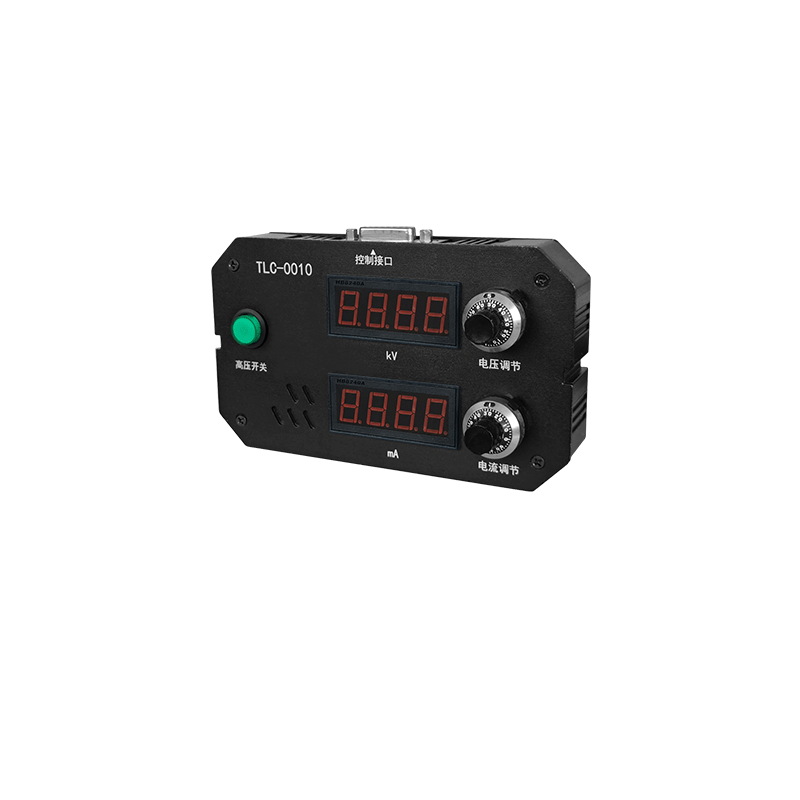Key Design Points of Adjustable DC High-Voltage Power Supply
In industrial automation, scientific research, power electronics and other fields, adjustable DC high-voltage power supplies serve as core energy supply devices, with their performance directly influencing system stability and reliability. Designing a high-precision, safe, and adaptable adjustable DC high-voltage power supply requires comprehensive consideration of topological structures, control strategies, electromagnetic compatibility (EMC), protection mechanisms, and other dimensions. Based on engineering practices, the key design points are discussed below.
1. Optimal Selection of Topological Structures
The topological structure is the foundation of power supply design, determining output characteristics and efficiency. For high-voltage output scenarios, isolated topologies are preferred, such as flyback, forward, half-bridge, or full-bridge structures. The flyback topology suits medium-low power ( < 200W) applications with simple circuits but higher core losses; the full-bridge topology is suitable for high-power ( > 1kW) scenarios, reducing switch stress and improving efficiency through symmetrical structures. When designing, select topologies based on power ratings and voltage adjustment ranges (e.g., 0-30kV continuous adjustment), and optimize transformer design:
Core Materials: Prefer low-loss ferrite or nanocrystalline materials for high-frequency ( > 100kHz) scenarios, and silicon steel sheets for low-frequency applications.
Winding Layout: Adopt layered or sandwich winding structures to reduce leakage inductance and distributed capacitance, avoiding high-voltage breakdown risks.
Insulation Design: Ensure primary-secondary withstand voltage meets standards (e.g., ≥4kV), achievable by increasing insulation tape layers or air gaps.
2. Refined Design of Closed-Loop Control Strategies
Key indicators of adjustable power supplies (e.g., voltage regulation rate ≤0.1%, load regulation rate ≤0.5%) rely on high-precision closed-loop control. Common solutions include:
1. Dual Closed-Loop Control (Voltage and Current)
The voltage loop (outer loop) collects output voltage via high-precision voltage divider resistors (error ≤0.05%), generating current reference values through PID regulators;
The current loop (inner loop) monitors switch current in real time via Hall sensors or sampling resistors, suppressing inrushes and enabling short-circuit protection.
2. Digital Control Upgrades
Introduce DSP or FPGA chips (e.g., TI’s TMS320 series) to implement adaptive algorithms (e.g., fuzzy PID, model predictive control), enhancing dynamic response speed (adjustment time ≤100ms) and anti-interference capabilities. Digital platforms can also integrate functions like parameter storage and remote communication (e.g., RS485/Modbus protocol) to meet intelligent requirements.
3. Electromagnetic Compatibility (EMC) and Noise Suppression
High-voltage power supplies are prone to electromagnetic interference (EMI) during operation, requiring suppression of both conducted noise and radiated noise:
Conducted Noise Control: Install EMI filters (including differential-mode capacitors and common-mode inductors) on the input side to filter high-frequency interference (e.g., noise in the 150kHz-30MHz band); adopt soft switching technologies (e.g., zero-voltage switching ZVS) to reduce switching losses and di/dt, dv/dt.
Radiated Noise Control: Optimize PCB layout to shorten high-voltage loop paths and avoid circular antenna formation; shield transformers, inductors, and other components with metal casings and ground the enclosure (ground resistance ≤1Ω) to reduce spatial radiation intensity (e.g., ≤30dBμV/m@30MHz).
4. Multi-Layered Safety Protection Mechanisms
In high-voltage environments, protection design is critical for reliability:
1. Overvoltage/Overcurrent Protection (OVP/OCP)
Set thresholds (e.g., trigger at 110% of rated output voltage), using hardware comparators or software logic to quickly turn off switches with a response time ≤10μs.
2. Insulation Monitoring and Discharge Design
Integrate an insulation resistance detection module (e.g., auto-check every 10 minutes) to alarm when insulation degrades; after shutdown, rapidly discharge capacitor energy via bleeder resistors (power ≥2W, resistance ≥10MΩ) to ensure residual voltage ≤50V.
3. Thermal Management Design
Equip power devices (e.g., MOSFETs, IGBTs) with efficient heat sinks or air-cooling systems to control junction temperature ≤125℃; monitor key component temperatures in real time via temperature sensors (e.g., AD590), and derate or shut down the system when overheating occurs.
5. Human-Machine Interaction and Maintainability Design
To enhance operational safety and convenience:
Interface Design: Use LCD touchscreens or knob-button combinations to display output voltage/current, temperature, and other parameters in real time, supporting local/remote mode switching.
Modular Architecture: Divide the power supply into independent units (input filtering, power conversion, control circuits, display modules, etc.) to facilitate fault location and replacement, reducing maintenance time to ≤30 minutes.
Conclusion
Designing adjustable DC high-voltage power supplies requires a combination of theoretical knowledge and engineering practice, balancing performance, cost, and size. By optimizing topological structures, improving control precision, and strengthening EMC and protection designs, these power supplies can meet the reliability and flexibility requirements of high-end applications, providing solid support for cutting-edge technology research and industrial upgrading.




















